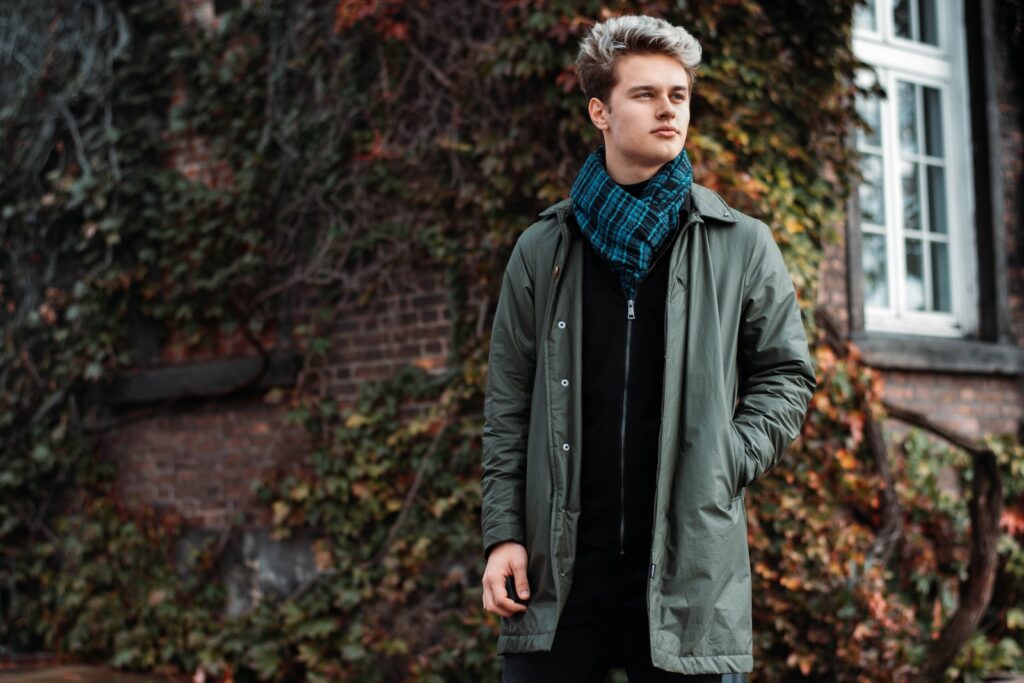Headshots don’t have to be restricted to a backdrop indoors. The outside offers a considerable amount of possibilities. Let’s take a look at some killer tips to capture great outdoor headshots.
Use natural light

You don’t need to bring all your lighting equipment when shooting outdoors. You can take advantage of all the natural light that nature offers. Be careful of putting your subject in direct sunlight as that can cause them to squint in their pictures.
Natural light can help you avoid awkward shadows and other pitfalls with artificial lighting in indoor shoots.
Shooting your subject in the shade is an option to cut down on any harsh shadows that natural lighting can cause. This way, you get the benefit of natural light without any of the downsides that can come with it.
You can also use bounce boards and reflectors. ND (Neutral Density) filters and diffusion panels to control the natural light.
You should schedule your shoot when the sun is coming up or before it goes down. This helps cut down on any extremely bright light and glare.
This is great if you are shooting during warmer weather, and temperature could become a factor. No one wants to see their subjects sweating during a photoshoot.
Have a break schedule and backup plans
The outside also is unpredictable. Weather forecasters do their best, but weather prediction is not 100% accurate. The heat could be more than expected, or rainstorms could pop up out of nowhere. Have a plan for you and your subject to handling these changes.
For heat-related issues, think about how you both will cool down. Will you be shooting near a place that has air conditioning? If not, do you have portable fans that you both can use?
The heat affects people differently. Some individuals can power through; others get very tense and upset. Even if you or your subject are good at powering through, there are health considerations as well. You don’t want anyone to overheat. Establish these heat breaks as part of your planning.
The same concept applies if you’re shooting in a cold location. Take all the precautions so your client feels comfortable.
Look at any potential rain the same way. What will you and your subject do if the sky opens up and begins pouring on you? Where can you both go for shelter? How will you protect your equipment? What about your subject’s clothing, hair, and makeup? Keep these things in mind when scheduling your outdoor shoot and plan for this worst-case scenario.
Scout the location well in advance of the shoot

Advance planning is crucial for anything we do in life. But it is beneficial when planning an outdoor headshot. You don’t want to wait until the day before or the day of the shoot to decide where to have it. All of that needs to be done in advance. As mentioned, you must put together a plan in case Mother Nature throws you a few curveballs.
There is no way to do this unless you have done your advanced planning. You cannot show up to a location on the day of the shoot and hope all the amenities you need are nearby. Pick your location and check to ensure it has everything you and your client need.
This also applies to the backdrops you plan to use. One of the fun parts of shooting outdoors is the backdrops you have to choose from. There can be fantastic artwork or murals you can use. There could be walls and steps with some crisp angles that would be great to use in a shoot. But there is no way for you to know all that unless you do your homework and plan.
Even if the client selects the location, you still need to walk the area so you know what it has to offer. This is also a chance to choose some alternative places. Your client may want photos done in a heavily trafficked or noisy location. Have backup plans in case these spots don’t work out.
If you aren’t prepared, it doesn’t make you look professional. The client shouldn’t be the one leading and taking charge of a photo shoot; you should be the one running the show.
Meet with your client

A pre-shoot meeting with your client is essential to ensure that you both have the same expectations for the shoot.
Unless the client is coming from out of town, you must meet with them before the photoshoot takes place. This meeting is another critical part of the planning portion of your shoot. Even if the client isn’t local, schedule a phone call/Skype/FaceTime or some other type of conversation first. You need to get a feel for your client and their personality so you know how to plan your shoot out.
Without this kind of information, you will be woefully unprepared when the session begins.
Discuss outfits with your client

What your client wears in a photography session is extremely important. They will have these photos for a lifetime. You want them to be happy with them. Let them know the basic rules about prints and trendy colors and how those can date their photos.
Avoid bright colors to avoid high contrast with the sunlight; sometimes, that is very hard to control.
Go with solid pastel colors; since the session is outdoor, chances are that your background will have some green, brown, or gray background. So, solid outfits would go well.
Use a tripod
The main reason to use a tripod is to have your hands free for:
- Help your client with the outfit
- Coach your client without having to hold the camera. Talking to them without having your eye on the camera is more approachable.
- It allows you to fix your lighting in case you need it
- You get a consistent frame without moving a lot
Coach your client
You wouldn’t know it from our selfie-obsessed culture, but people do not like having their pictures taken. They avoid cameras at group functions like the plague.
However, nowadays, almost everyone needs a professional photo for social media or their website. So even the most photo-phobic person has to have a professional headshot. Recognize this in your client and keep them loose and laughing.
Warm them up before the session gets underway so they can get used to being in front of the camera and hearing it. Once they have loosened up a bit, then you can get going and start the session.
Throughout the session, make sure you continuously give them coaching and feedback. Always tell them what you are doing and why you are getting so many photos. To provide them with the best photos, you need to shoot them from multiple angles and poses, both with and without a smile.
Keep the feedback coming, which will help keep your camera-shy subject comfortable. Once you have them comfortable, their personality will shine, and you will get the most out of this session.
Choose the right backdrop. – Bonus tip

When choosing the right backdrop for your outdoor headshots is easier than you think. Keep in mind these tips:
- Keep at least 200 to 300 ft distance from the subject to your backdrop
- You can create virtually any backdrop usable outdoors, as long as you are using an 85 mm lens or longer between f2.8 to f5.6 aperture.
- Avoid any motion in your background because it is very distracting.
- If the headshot goal allows it, try low angles so you can have the sky and clouds as a backdrop.
In Conclusion
Hopefully, these tips were helpful for you when preparing for headshots outdoors. While it may require some pre-planning, that is something you should do already. Taking a subject outdoors gives you a whole new range of elements to incorporate. That will help you create quality shots, make your client happy, and give you repeat business.
